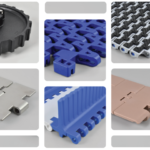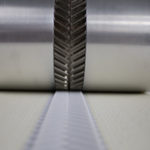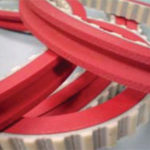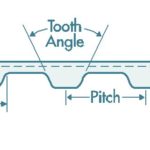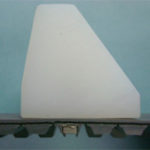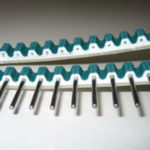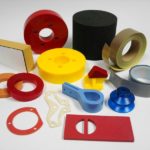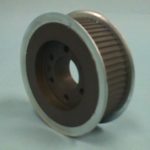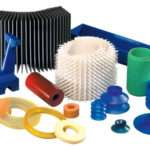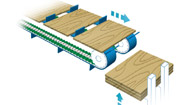
Belting it right
There are many uses for synchronous belts. Consider this.
According to Manufacturers’ Monthly:
“From conveyors in the factory floor to treadmills, elevators and bowling pinsetters, synchronous timing belts are used everywhere to facilitate synchronous movements and power/torque transmission.
“Synchronous belt drives operate on the tooth grip principle. The belt resembles a flat belt with evenly spaced teeth on the inside surface. Each particular application requires a timing belt with specific friction capabilities, tooth pitch profiles and surface characteristics.
“The shape and fit of the belt tooth determine the accuracy of positioning. Proper clearance between a belt tooth and sprocket groove lets the tooth enter and exit smoothly. Too much clearance creates inaccuracy, while too little can generate excessive noise, vibration, and wear.
“Different applications also require different backing characteristics. While some applications need smooth, sliding surfaces, others might call for high-friction surfaces to create a strong grip on the material being handled.
“With so many parameters to consider, manufacturers need suppliers with a strong technical team to support them and ensure that the belts are best suited to their specific needs.
“Gates Australia manufactures synchronous timing belts in a variety of tooth pitch, length, and material combinations that can be easily configured for each application.
“Tony Sculpher, Gates Australia’s product manager for power transmission, told Manufacturers Monthly that his team first engages with customers to understand their needs and then uses online design tools to accurately calculate the parameters for each application.
“’When customers consult with our team, we come up with recommendations and help them select the right size for belts and pulleys to use the power/torques correctly,’ he said.
“Choosing the right belts and pulleys also means that the machines will work efficiently and achieve their best life expectancy.
“’We size the belts and pulleys to not only transmit power/torque effectively, but also to produce a satisfactory life expectancy. The drives are an important part of the clients’ business. They move their machines and propel their production. In a way, their livelihoods depend on the smooth functioning of these drives. So, it is important that they work right from the get-go, while being reliable and long-lasting,’ he said.
“The company offers linear belts in two styles – welded endless and open ended. Welded endless belts are ideal for low torque conveying applications, while open ended belts are typically used for motion control applications.
“’In the conventional power transmission application, the endless belts are used to transmit motion between the shafts. In the open ended belting applications, the belt is just one long length, without any joints. These are used mainly in the packaging industry, where you have machines moving back and forth continuously over the same path and at the same distance or direction,’ Sculpher said.
Urethane timing belts
“Conventionally, rubber-based belts have been used by different industries for decades. But Sculpher says the market is increasingly favouring urethane belts, which combine clean and hygienic surface with lighter weight.
“’The market is now moving to urethane, which is clean and light weight. Urethane belts also offer better reliability as they are better at transmitting power and torque,’ Sculpher said.
“Polyurethane belts come in different colours, with certain colours now associated with particular industries.
“’White and blue belts are most suitable for the food industries and are generally associated with the food- grade applications. Blue has become an unofficial benchmark in the food industry. That’s because varying shades of blue offer good visibility and are easily noticeable in the food industry. White is also very popular as it looks clean and hygienic,’ he explained.
“Another improvement in the timing belts in recent years, according to Sculpher, is the use of advanced composite material as tensile cords, which make the belts lighter and stronger than their conventional versions.
“’In the old days, the traditional rubber-based belts often used nylon or rayon material as tensile cords. But the new urethane belts use steel woven cords or aramid cords, which enable the belts to be designed with varying characteristics and flexibilities,’ he explained. ‘Kevlar – which is just a tradename for aramid fibres – is an extremely strong carbon-based product with the ability to transmit high power/torque compared to its size. Using Kevlar as reinforcement in urethane timing belts offers a combination of high tensile strength, light weight and compact size.
“‘Unlike rubber belts, urethane timing belts do not stretch. They also do not require any lubrication. Sculpher says this means savings for the manufacturer as it reduces the need for maintenance.
“’Polyurethane belts made with Kevlar cords also have a much higher power/torque rating – or what we call as power density – compared to thicker belts made from rubber-based products,’ he said.”
